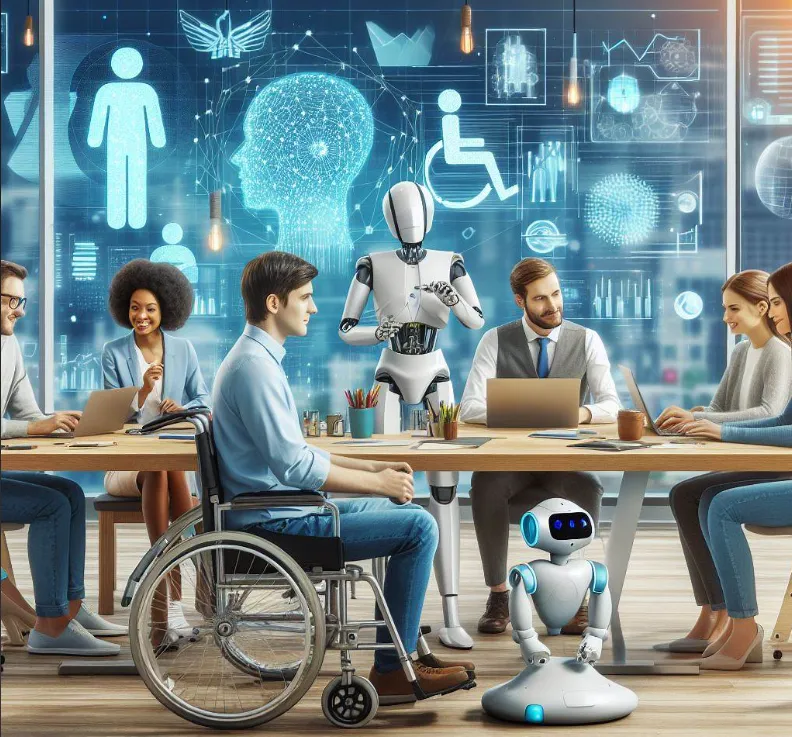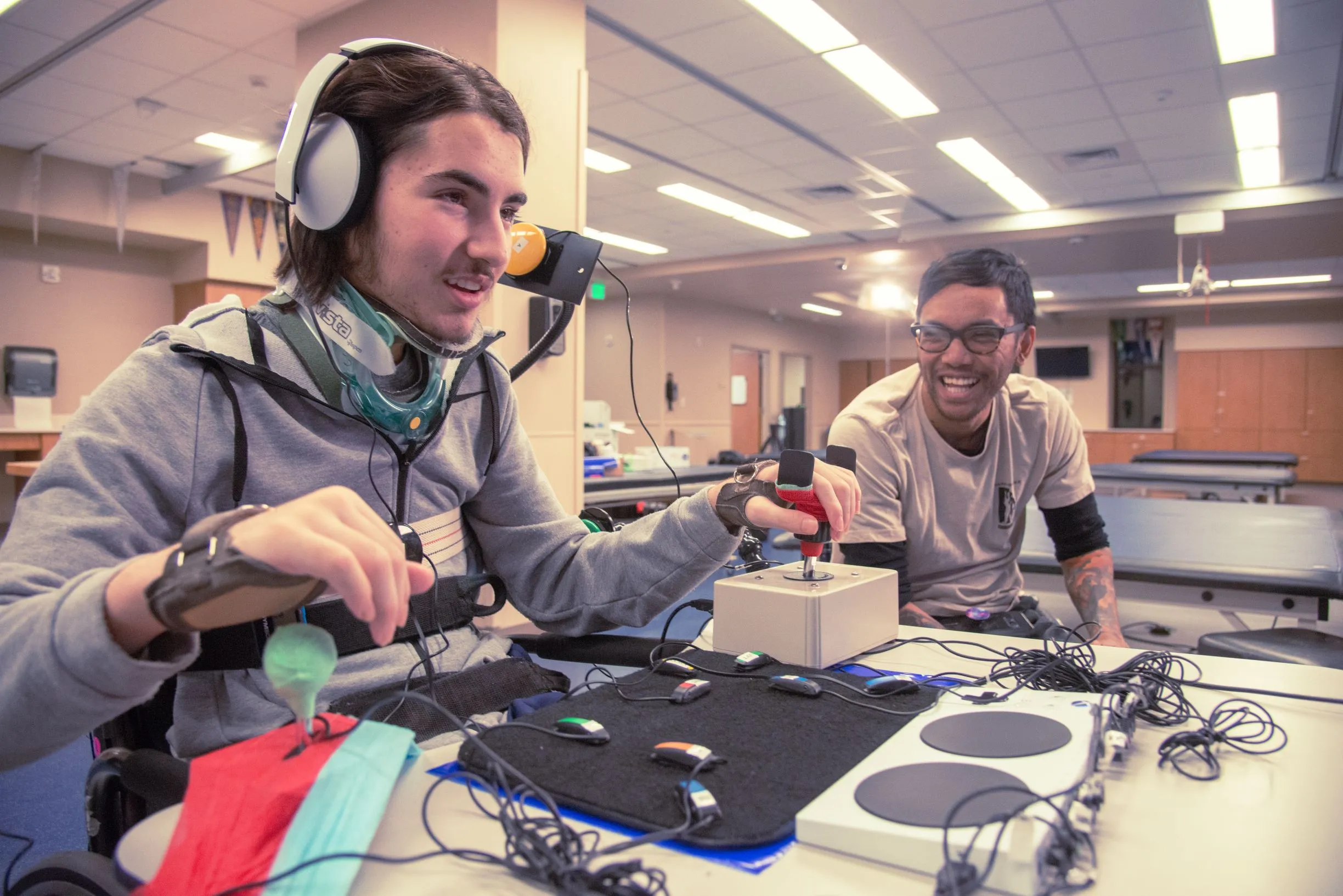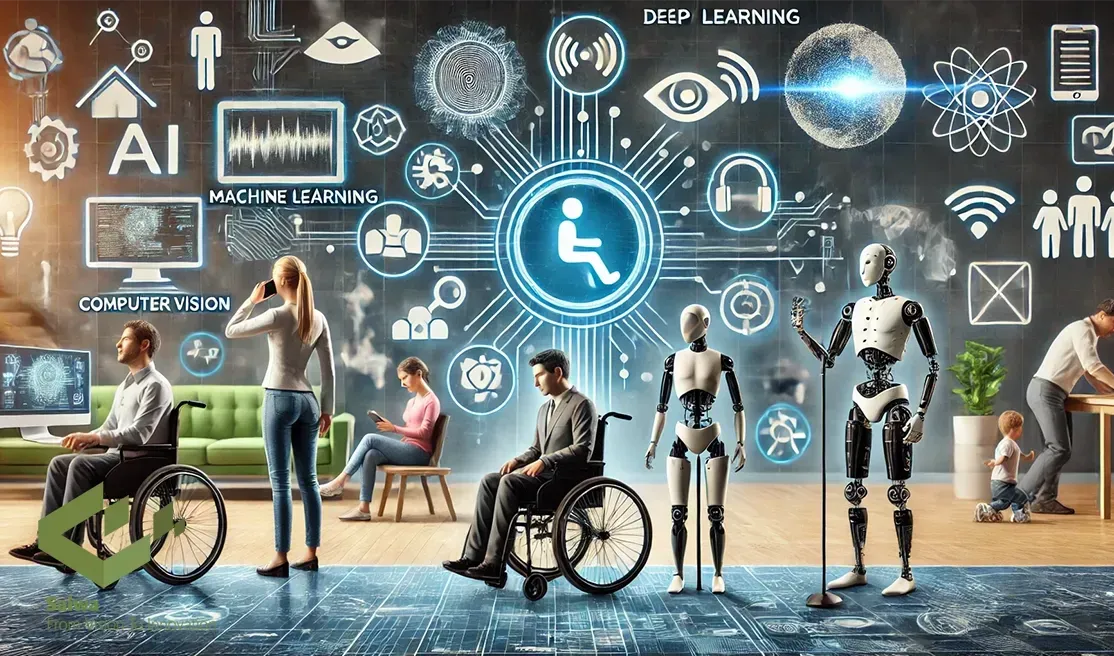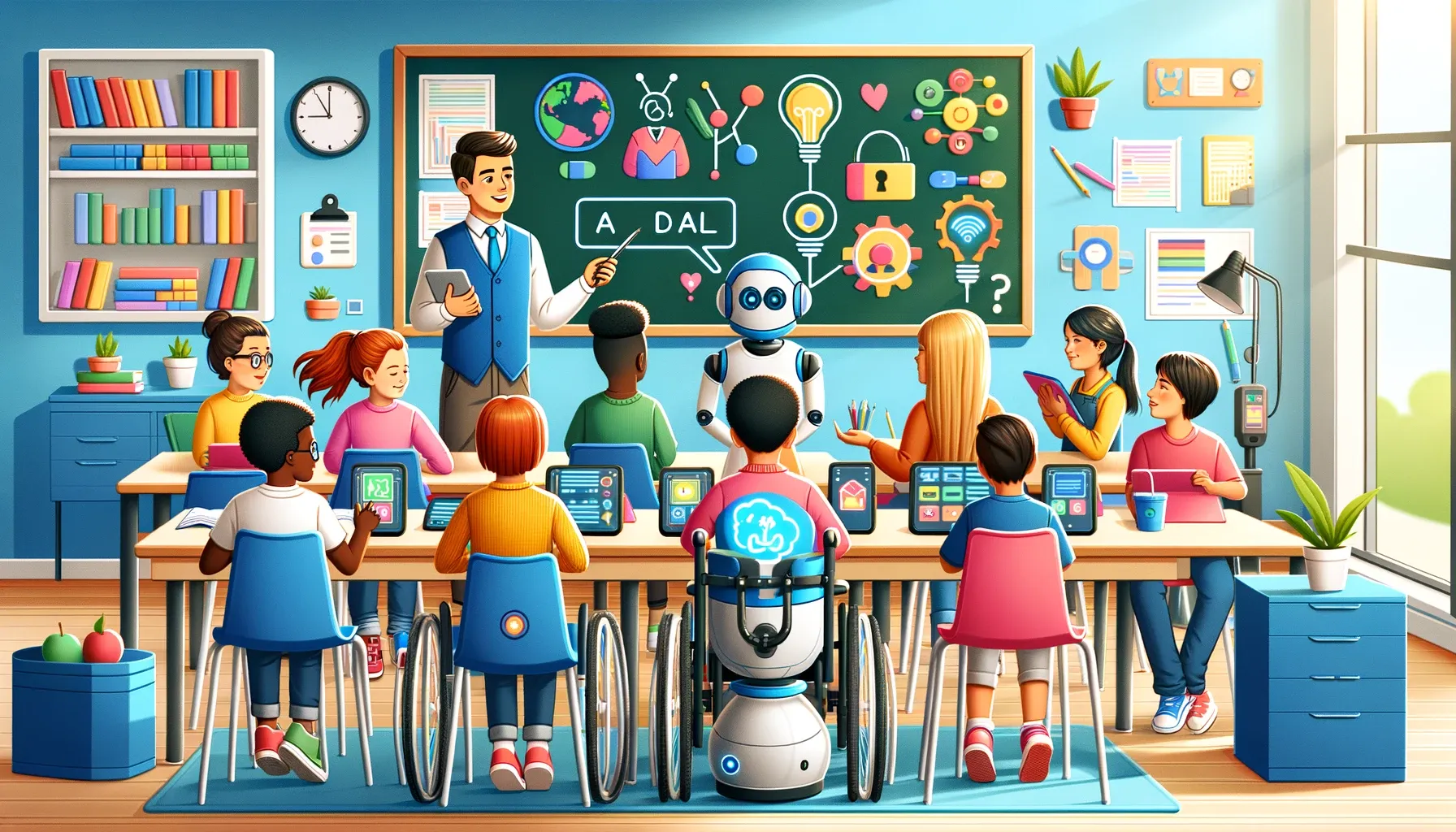Artificial Intelligence Accessibility Tools for People with Disabilities
Discover how AI-powered accessibility tools are transforming lives for people with disabilities. From speech recognition to smart navigation, learn about the best AI solutions making technology more inclusive.
Picture this: you're trying to navigate a website using only your voice, or you need to understand complex text while dealing with dyslexia. Until recently, these scenarios presented significant barriers. But artificial intelligence is changing everything, making technology more accessible than ever before.
AI isn't just enhancing existing assistive technologies – it's becoming a powerful accessibility tool in its own right. From real-time transcription that helps deaf students follow classroom discussions to predictive text that supports people with motor impairments, AI-driven solutions are creating more personalized and inclusive experiences for millions of people worldwide.
The intersection of AI and accessibility represents one of technology's most promising frontiers. As these tools become more sophisticated and widely available, they're not just removing barriers – they're opening up entirely new possibilities for independence, communication, and participation in digital spaces.
Table of Contents
- Understanding AI in Accessibility
- AI Tools for Students with Disabilities
- AI Solutions for Educators with Disabilities
- Communication and Speech AI Tools
- Visual and Reading Assistance AI
- Navigation and Mobility AI Tools
- Top AI Accessibility Platforms
- The Future of Accessible AI
Understanding AI in Accessibility
When we talk about AI for people with disabilities, we're referring to two main categories: AI tools specifically designed for accessibility needs, and general AI tools that can be adapted to support independent living. Both types are making significant impacts across different areas of daily life.
AI enhances accessibility in three fundamental ways. First, it removes barriers between people with disabilities and the tasks they want to accomplish. Think about AI-powered speech recognition software that helps people with limited mobility control their devices, or smart prosthetics that use machine learning to respond more intuitively to the user's intentions.
Second, AI supports communication by translating thoughts and feelings into words, even when someone communicates differently. Predictive text systems and language processing tools can generate speech from text or symbols, opening up new avenues for expression and connection.

Third, AI offers personalized support through learning materials, monitoring software, and adaptive interfaces that respond to individual needs in real-time. This adaptability means the technology gets better at helping you the more you use it, creating truly customized assistance.
The key advantage of AI in accessibility lies in its ability to learn and adapt. Unlike traditional assistive technologies that follow fixed rules, AI systems can understand context, recognize patterns, and make intelligent decisions based on individual user preferences and behaviors.
AI Tools for Students with Disabilities
Educational environments are being transformed by AI-powered accessibility tools that support diverse learning needs. For students who struggle with traditional communication methods, Augmentative and Alternative Communication (AAC) devices now include AI features that reduce typing requirements and recognize non-standard speech patterns, including stuttering or speech affected by motor impairments.
AI-driven transcription tools are revolutionizing classroom accessibility for deaf and hard-of-hearing students. Real-time transcription of classroom audio provides immediate access to discussions, lectures, and group work. These systems have improved dramatically in accuracy, making them reliable tools for academic success.
Writing support has evolved far beyond basic spell-checkers. Tools like Grammarly now use AI to offer comprehensive writing assistance that's particularly valuable for students with learning disabilities. When used appropriately, these tools help users understand changes in word choice and placement while identifying spelling errors that might have gone undetected due to their disability.
Reading assistance represents another area where AI is making substantial impacts. Students who struggle with focus or concentration benefit from advanced text-to-speech tools like Speechify and NaturalReader. These programs don't just read content aloud – they use AI to create summaries and outlines, helping students review key concepts and check their understanding more effectively.
For more insights on how AI can enhance learning experiences, check out our guide on creating efficient prompts for text generation in LLMs.
Executive functioning support is another crucial area where AI is making a difference. Generative AI tools can break down large assignments into manageable steps, create personalized schedules, and set reminders to keep students organized and on track. Vanderbilt University's Planning Assistant project exemplifies this approach by scanning course syllabi to extract key dates and automatically adding them to student calendars.
If you're interested in understanding more about how these AI systems work, our article on what are LLMs and how they work provides excellent background context.
AI Solutions for Educators with Disabilities
Educators with disabilities face unique challenges in creating and delivering content, and AI is providing powerful solutions. Speech-to-text technologies integrated into Microsoft Office, Google Workspace, and modern operating systems enable educators with vision, language, or dexterity challenges to draft course materials, provide feedback, and communicate effectively using voice commands.
Predictive typing features streamline written communication by suggesting contextually appropriate words and phrases. This technology significantly boosts productivity for educators who may face challenges with traditional typing methods, allowing them to focus on content creation rather than mechanical input.
Generative AI tools offer particular value for educators skilled in crafting effective prompts. Microsoft Copilot, for instance, can assist colorblind educators by converting color-based data in charts into accessible formats. Research tools like Elicit and Consensus simplify literature reviews by summarizing research articles and highlighting key insights, which proves especially helpful for educators with visual or language disabilities.

Task management has been revolutionized by AI-driven tools embedded in email platforms. Apple Mail and Microsoft Outlook now suggest calendar events from email content, promoting better organization for educators with executive function challenges. This automation reduces cognitive load and helps maintain professional schedules more effectively.
Real-time transcription tools available on platforms like Zoom, Microsoft Teams, and Google Meet provide live captions during meetings and classes. These tools help educators follow discussions more easily and create searchable transcripts for later reference, supporting both immediate participation and long-term planning.
For educators looking to leverage AI more effectively in their teaching, our comprehensive guide on the best AI tools for text, image, audio, and video generation offers practical insights and recommendations.
Communication and Speech AI Tools
Communication barriers can significantly impact quality of life, but AI is breaking down these walls with innovative solutions. Voiceitt represents a breakthrough for people with non-standard speech patterns. This AI system learns and adapts to individual speech patterns, enabling clearer communication for people with conditions like cerebral palsy, ALS, or stroke-related speech changes.
Text-to-speech technology has reached new levels of sophistication with platforms like Play.ht and Murf. These services generate incredibly realistic voices with emotional range and customization options. Users can choose from hundreds of voices in multiple languages and accents, or even create custom voice profiles that match their communication style.
Predictive communication tools like the Predictable app use AI to anticipate text and phrases, dramatically speeding up communication for people with conditions that affect speech or motor control. These systems learn from individual usage patterns, becoming more accurate and helpful over time.
Voice-activated AI assistants like Amazon's Alexa, Google Assistant, and Apple's Siri have become invaluable for people with mobility limitations. Simple voice commands can control lighting, appliances, locks, thermostats, and entertainment systems, providing unprecedented independence in home environments.
The book Life 3.0: Being Human in the Age of Artificial Intelligence explores how these technologies are reshaping human communication and interaction in profound ways.
Visual and Reading Assistance AI
Visual impairments present unique challenges in navigating digital and physical spaces, but AI is providing sophisticated solutions. Microsoft's Seeing AI represents a comprehensive approach to visual assistance, using smartphone cameras to describe people, text, and objects in real-time. The app can read printed text aloud, identify currency denominations, and even recognize friends and their emotions.
Reading assistance has evolved beyond simple text-to-speech functionality. Modern AI systems like Read Easy.ai tackle the challenge of low literacy levels by simplifying complex text while maintaining essential meaning. These tools analyze readability and suggest improvements, making content more accessible to people with cognitive disabilities or learning differences.

Image recognition technology is advancing rapidly, with AI systems now capable of generating detailed descriptions of visual content. While current AI can identify objects and basic scenes, human oversight remains important for ensuring context-appropriate descriptions, especially in educational or professional settings.
Color contrast analysis represents an area where AI excels completely. Automated tools can scan websites and documents to identify instances where text contrast falls below accessibility standards, and advanced systems can suggest appropriate color combinations that maintain design aesthetics while meeting accessibility requirements.
For those interested in creating more accessible visual content, our guide on creating efficient prompts for image generation provides valuable techniques for working with AI image generation tools.
Navigation and Mobility AI Tools
Physical navigation presents ongoing challenges for people with mobility impairments, but AI is creating smarter solutions. WheelMap uses AI to crowdsource and maintain information about wheelchair-accessible spaces, helping users plan routes and activities with confidence.
Smart home integration through AI assistants has revolutionized independent living. Voice-controlled systems can manage complex routines involving multiple devices, from adjusting lighting and temperature to operating security systems and communication devices. These systems learn user preferences and can anticipate needs based on daily patterns.
Wearable AI devices are becoming increasingly sophisticated in health monitoring and emergency response. Smartwatches and fitness trackers use AI to analyze patterns in heart rate, sleep data, and activity levels. This information can be shared with healthcare providers or used to adjust daily routines for optimal health management.
Transportation assistance is another emerging area where AI shows promise. Navigation apps are incorporating accessibility data to provide routing options that consider mobility needs, surface conditions, and barrier-free access points.
The insights in AI 2041: Ten Visions for Our Future explore how these navigation and mobility technologies might evolve to create even more inclusive environments.
Top AI Accessibility Platforms
Several comprehensive platforms are leading the charge in AI-powered accessibility solutions. Stark has established itself as a comprehensive tool for designers and developers, integrating accessibility checks directly into design workflows. The platform can identify potential issues up to 10 times faster than traditional methods, catching problems early in the development process.
accessiBe takes a different approach, using AI to automatically remediate websites for accessibility compliance. The system analyzes website layout and content, making intelligent adjustments that improve accessibility without breaking existing design elements. Its contextual understanding allows for more accurate fixes than rule-based systems.
UserWay positions itself as an all-in-one accessibility solution, combining AI-powered automatic detection and remediation with 24/7 monitoring capabilities. The platform helps organizations maintain compliance with standards like WCAG while providing real-time fixes for common accessibility barriers.
AudioEye represents a hybrid approach, combining AI automation with human expertise. This model acknowledges that while AI can quickly identify and fix many accessibility issues, human judgment remains essential for complex problems and quality assurance.
For developers and designers working on accessibility, our article on what is Answer Engine Optimization (AEO) discusses how to make content more accessible to AI systems and search engines simultaneously.
These platforms share common strengths: speed in identifying issues, automation of routine fixes, and integration with existing development workflows. However, they also share common limitations – AI cannot fully replace human judgment in ensuring truly inclusive experiences.

The Future of Accessible AI
The intersection of AI and accessibility is evolving rapidly, with exciting developments on the horizon. Machine learning models are becoming more sophisticated at understanding context and nuance, which will improve the quality of AI-generated alt text, captions, and content summaries.
Natural language processing advances are making AI better at understanding and responding to diverse communication styles. This progress is particularly important for people with cognitive disabilities or non-standard speech patterns, as AI systems become more adaptable to individual communication needs.
However, the future of accessible AI isn't just about technological advancement – it's about inclusive development practices. The most effective accessible AI solutions will be those developed with input from disability communities throughout the design and testing process.
Educational institutions and organizations must prioritize including people with disabilities in AI decision-making processes. This means not just consulting with disability advocates, but involving people with disabilities as co-designers, testers, and decision-makers in AI development projects.
The book Artificial Intelligence: A Guide for Thinking Humans provides thoughtful perspective on ensuring AI development serves human needs rather than simply pursuing technological capability.
Policy development is equally crucial. Clear guidelines that allow AI tool usage for accessibility purposes – without associating them with academic dishonesty or professional misconduct – are essential for widespread adoption. Institutions need policies that recognize AI as a legitimate accessibility accommodation.
Looking ahead, we can expect AI accessibility tools to become more personalized, more accurate, and more seamlessly integrated into daily life. Wearable devices, smart environments, and personal AI assistants will work together to create adaptive support systems that respond to individual needs in real-time.
The ultimate goal isn't just to use AI to fix accessibility problems, but to create AI systems that are inherently inclusive from the ground up. This means designing AI with accessibility in mind from the earliest stages of development, rather than retrofitting accessibility features later.
As we move forward, the success of AI in accessibility will be measured not by technological sophistication alone, but by its real-world impact on the lives of people with disabilities. The most important question isn't whether AI can solve accessibility challenges, but whether it empowers people with disabilities to participate fully in digital and physical spaces.
For those interested in staying current with AI developments that affect accessibility, our guide on the best references to learn about prompt engineering can help you better understand and leverage these evolving technologies.
The convergence of AI and accessibility represents more than technological progress – it's a step toward a more inclusive world where technology adapts to human diversity rather than requiring humans to adapt to technological limitations. As these tools continue to evolve, they promise to unlock new possibilities for independence, creativity, and connection for people with disabilities.
The future of accessible AI depends on continued collaboration between technologists, disability advocates, and the broader community. By working together, we can ensure that AI serves everyone and creates truly inclusive digital experiences that benefit society as a whole. The books The AI Engineering Bible and LLM Engineer's Handbook offer technical insights for developers who want to build more inclusive AI systems.
As artificial intelligence becomes increasingly integrated into our daily lives, ensuring these systems are accessible isn't just good practice – it's essential for creating a world where technology truly serves everyone.